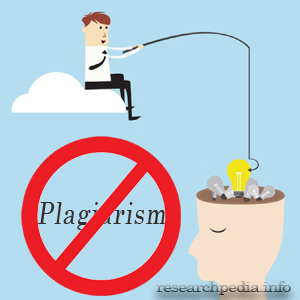What is plagiarism
Plagiarism is willing or unwilling copying of a previously published work without referencing it. Plagiarism is considered a very bad practice in academia and plagiarists are usually punished. Plagiarism detection is an area of research used for identifying plagiarists.
Types of Plagiarism Detection:
There are two types of plagiarism detection. 1) External and 2) Intrinsic.
External Plagiarism Detection:
- The new written document words are matched with the old documents in the database crawled from the Web to find the similarities among them.
- If the matching words exceed the similarity threshold the document is considered plagiarized.
- Turnitin is the software usually used for detecting this kind of plagiarism with a threshold of 19%.
Intrinsic Plagiarism Detection:
- We do not have any database with which we can match the words of newly written documents.
- So the stylistic features of paragraphs in the same document are matched and if any paragraph in one document is found with different stylistic features it is considered plagiarized.
- Matching between paragraphs stylistic features should be less than 50% to consider it a plagiarized one.
Type of Plagiarism:
Different types of plagiarism are discussed below:
- Word to Word Plagiarism is a type where we just copy-paste someone else work and take credit for it.
- Paraphrasing is also a type of plagiarism that is done by twisting original words and giving them a look like a new and original one.
- Patchwork paraphrasing is a type of paraphrasing in which some paragraphs are taken from one source and others are taken from another source.
- Uncited sources are also considered plagiarism because you have not given credit to the original creator.
- Self-plagiarism can also be considered plagiarism as it involves quoting your work without proper citation.
Why Plagiarism is wrong:
Let us know what are the reasons why plagiarism is considered wrong.
- It is a type of dishonesty. If you are labelling a work that is not yours. You are a dishonest person.
- As plagiarism is an easy way out, the learning that is the main theme of why research is practised at college with students regularly is lost. Students seek out an easy way by copying paste stuff from here and there and getting good grades.
- Trust deficiency between students and teachers is created when students start practising plagiarism.
How to avoid plagiarism:
Plagiarism is avoidable with following steps:
- Learn research skills.
- Practice understanding someone else word and then writing it in your own way.
- Give proper credit to the authors.
- The use of paraphrasing should be minimized as much as possible.
- Always proofread your documents before submission.
Conclusion:
Writing is a journey. Don’t be afraid to ask for help. If you don’t something then ask people who know it, if they can’t help you then you can learn anything you want from YouTube and it’s free of course.



very informative
Thanks
is there any laws or punishments regarding plagiarism?